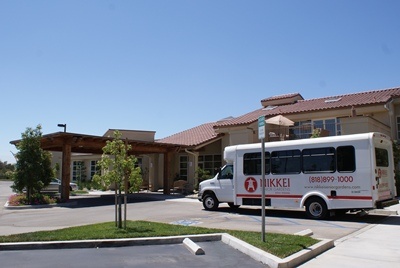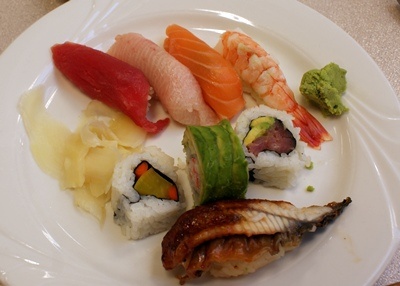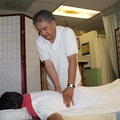In late January of last year, a nursing home facility called Nikkei Senior Gardens opened in Arleta, San Fernando Valley. As its name suggests, it is a facility aimed primarily at elderly Japanese-Americans. I visited Nikkei Senior Gardens, where the trees are still in their infancy.
The person who showed me around the facility was Alan Slight, the executive director. I had assumed that the facility's manager would be of Japanese descent, so I was a little surprised to see that he was white. This was a typical Japanese preconception, but this is America.
I heard that Slight was dispatched by Seniority, the company that manages the facility. The company also manages Kokoro, a facility for Japanese seniors in San Francisco, and that this is how they ended up working on Nikkei Senior Gardens.
Nikkei Senior Gardens was planned by volunteers from the San Fernando Valley Japanese American Community Center, located a 10-minute walk from the facility. They started a new company for the facility and spent over 10 years applying for licenses and raising funds. Construction actually began in 2007. It opened last year and currently has 85 residents, an occupancy rate of 86%, a high figure considering the recession (although most of the residents are Japanese, this is not limited to them, as it is prohibited by law to specify a race).
According to Slight, the number of assisted living facilities rooted in a specific race or culture has been increasing in recent years, and in addition to Japanese, there are also facilities for Jewish, Chinese, Korean, and other people. Although America is a multi-ethnic country, it is not uncommon for people of Japanese descent to form friendships with others based on their own race. "Residents want to live while experiencing a culture that is familiar to them," says Slight, and this facility also serves Japanese food (Western food is available), and activities are held every morning and afternoon where residents can enjoy Japanese culture and games such as calligraphy and hanafuda cards.
We spoke to some residents having lunch in the dining hall. A woman who has been living there for two months said, "I decided to come here because I heard the food is delicious." The meals provided three times a day, seven days a week at the facility do not use canned or frozen foods. With consideration for the health of the residents, they are cooked using only fresh vegetables and fruits. Incidentally, one of the things the facility is proud of is that the residents can enjoy gardening at home. Apparently, they sometimes donate the vegetables and fruits they harvest from their gardens to the kitchen.
While we were listening to him, Japanese chef Masayuki Arikawa began making his rounds to the tables of the residents who were eating. "I check their health by checking how much they are eating and how much food is left over," said Arikawa. Arikawa has experience working as a caregiver in Japan, and says he is happiest when the elderly people enjoy their food. The Japanese food that Arikawa makes is well-received among the Japanese residents, with meat tofu, grilled silver cod with saikyo miso, and the sushi that is served every Saturday being popular dishes.
One of the residents' families visits her mother every Saturday. She describes the bright, sunny facility as "like coming to a resort." The climate and size of the San Fernando Valley help make the new facility look like a resort. In a previous Discover Nikkei column , Nancy Matsumoto wrote that her mother was envious, saying, "If you live in the San Fernando Valley, this facility is perfect!"
During the interview, a woman called out to Slight and said, "I'd like to talk to you about something," and entered the office. Was she a resident or a family member? I felt that she had an open American attitude. On the other hand, when I asked Slight about the characteristics of elderly Japanese people, he replied, "They seem to prefer to be treated with respect and in a formal manner. I think it's a difference in custom. I'm still learning." Just like with food, everything for Japanese people should be a mix of Japanese and Western. And above all, they must have a sense of "respect for the elderly."
I am happy that another facility where elderly Japanese Americans can spend their retirement years in comfort has been established, and I respect the tenacity of the Japanese people who completed this facility. I would also like to express my heartfelt gratitude to Mr. Slight and all the other staff members who are practicing the spirit of respect for the elderly in the San Fernando Valley.
* * *
Nikkei Senior Gardens
9221 Arleta Avenue Arleta, CA 91331
(818) 899-1000
http://www.nikkeiseniorgardens.com/
© 2010 Yumiko Hashimoto













